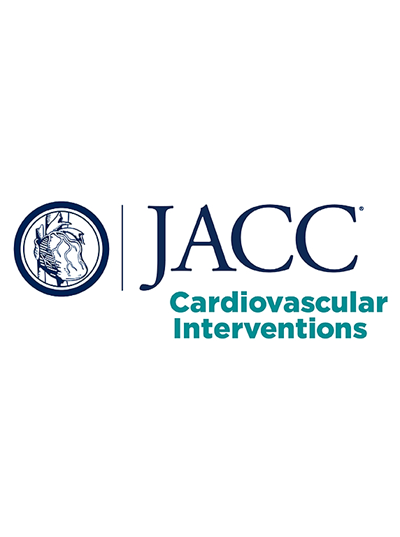1-Year Real-World Outcomes of TAVR With the Fifth-Generation Balloon-Expandable Valve in the United States
IF 11.7
1区 医学
Q1 CARDIAC & CARDIOVASCULAR SYSTEMS
引用次数: 0
Abstract
Background
Longer term outcomes of transcatheter aortic valve replacement (TAVR) with the SAPIEN 3 Ultra RESILIA (S3UR) valve over its predecessors have not been reported in a national registry.
Objectives
The aim of this study was to compare the 1-year clinical and echocardiographic outcomes of the S3UR with those of the SAPIEN 3 (S3) and SAPIEN 3 Ultra (S3U) in the Society of Thoracic Surgeons/American College of Cardiology TVT (Transcatheter Valve Therapy) Registry.
Methods
From September 2022 to March 2023, patients who underwent native TAVR with the S3UR or the S3 or S3U valve were propensity matched and compared. Predictors of 1-year outcomes were identified. The median follow-up time was 358 days (Q1-Q3: 47-365 days) for the S3UR and 364 days (Q1-Q3: 80-365 days) for the S3 and S3U.
Results
A total of 4,598 S3UR patients were propensity matched with 4,598 and 32,536 S3 and S3U patients. At discharge, effective orifice areas were larger in the S3UR group (P < 0.0001). The lower discharge mean gradient in the S3UR group was maintained at 30 days and 1 year (P < 0.0001 for all). At 1 year, all-cause mortality (7.6% vs 9.7%; HR: 0.8; 95% CI: 0.67-0.93; P = 0.004), mild or greater paravalvular leak (PVL) (15.6% vs 18.5%; HR: 0.82; 95% CI: 0.69-0.97; P = 0.02), and life-threatening bleeding (2.0% vs 2.7%; HR: 0.7; 95% CI: 0.54-0.94; P = 0.03) were lower in the S3UR group. S3UR and mild or greater PVL were predictive of 1-year mortality in the overall cohort and in low-risk patients. Valve reintervention remained rare at 1 year (0.6% vs 0.4%; HR: 1.46; 95% CI: 0.77-2.78; P = 0.25).
Conclusions
TAVR with the S3UR is associated with superior 1-year clinical outcomes and lower gradients than its predecessors, with less PVL and low valve reintervention. Longer follow-up will determine the durability of the RESILIA technology in the SAPIEN valve platform.
美国第五代气球膨胀阀TAVR的一年实际效果
经导管主动脉瓣置换术(TAVR)使用SAPIEN 3 Ultra RESILIA (S3UR)瓣膜的长期疗效优于其前身,尚未在国家登记中报道。
本文章由计算机程序翻译,如有差异,请以英文原文为准。
求助全文
约1分钟内获得全文
求助全文
来源期刊

JACC. Cardiovascular interventions
CARDIAC & CARDIOVASCULAR SYSTEMS-
CiteScore
11.60
自引率
8.80%
发文量
756
审稿时长
4-8 weeks
期刊介绍:
JACC: Cardiovascular Interventions is a specialist journal launched by the Journal of the American College of Cardiology (JACC). It covers the entire field of interventional cardiovascular medicine, including cardiac, peripheral, and cerebrovascular interventions. The journal publishes studies that will impact the practice of interventional cardiovascular medicine, including clinical trials, experimental studies, and in-depth discussions by respected experts. To enhance visual understanding, the journal is published both in print and electronically, utilizing the latest technologies.
 求助内容:
求助内容: 应助结果提醒方式:
应助结果提醒方式:


